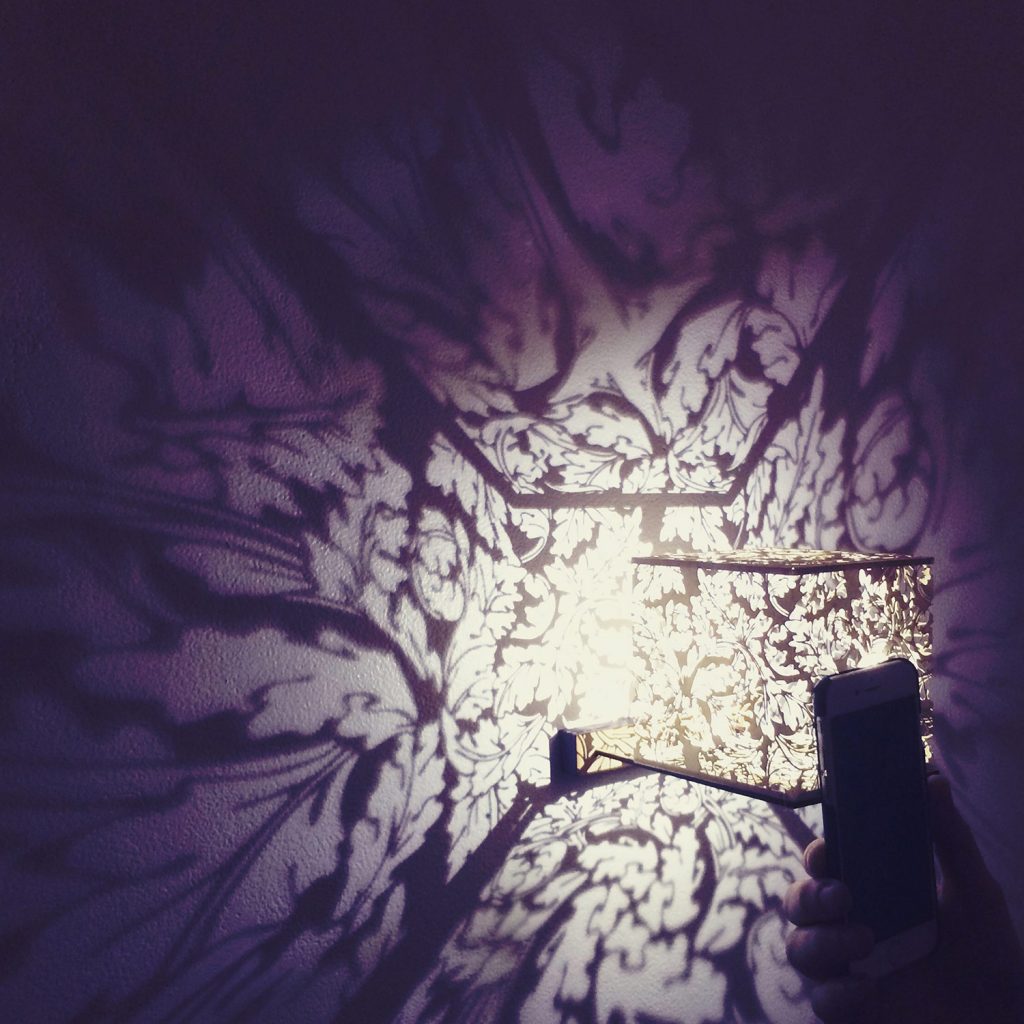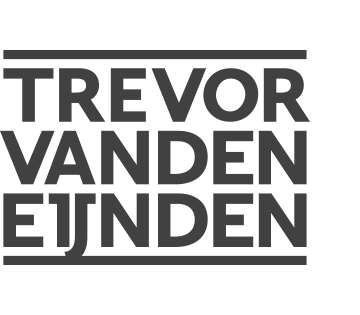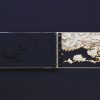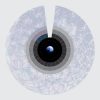
familiar strangers
A series of laser and scalpel cut historical naturalist wallpapers marking shifting interpretations and relationships to nature brought home by way of into the home. Each 10.2×10.2×10.2 cm (4x4x4 inch) cube functions as a negative that produces a fleeting photic positive image when engaged with by an audience.
ABOVE
Interval 10: the world keeps moving on but in my repetition i steal more time
Trevor Van den Eijnden
2015–2020
laser-cut paper and MDF, embroidery string,
10.2×10.2×10.2 cm
From a soul is not made of atoms; text by curator Dr. Adrienne Fast
”…another common theme that runs through the artist’s practice: the experience of ecological grief caused by the current Anthropocene era, and the intensity with which contemporary behaviours continue to damage the environment. This concept is explored in two separate but related bodies of work in the exhibition: familiar strangers (2014– ongoing), a series of small, delicate, laser-cut paper sculptures attached to the walls of the gallery, and sham–real shadows (2017), a sculptural and light installation that projects patterned light in all directions, from the centre of a discrete gallery space.
familiar strangersand sham–real shadows are connected by their exploration of the relationship between human beings and the environment-with particular interest in how that relationship has evolved since the beginnings of the Industrial Revolution. Van den Eijnden pursued an intense period of research into the art and design of the nineteenth century, seeking evidence of how the changing relationship between mankind and nature was manifested visually at that time. This broad framework for inquiry eventually narrowed to focus on the history and development of naturalistic wallpaper designs intended to decorate the domestic interiors of homes that were often located in highly industrialized cities. Van den Eijnden was particularly drawn to the work of renowned designer William Morris, who, at the height of the Industrial Revolution was creating highly stylized, intricate patterns inspired by nature, for which he continues to be well known to the present day. Morris was a vocal proponent of the idea that nature and design ought to be intertwined, and that it was impossible to conceive of humanity and nature as independent of each other. By situating these ideas in the context of the Anthropocene, Van den Eijnden reinterprets Morris’ ideas to make them relevant to the contemporary moment.
familiar strangers is a series of laser-cut paper boxes, each featuring a different historical wallpaper design that highlights romanticized, nineteenth century attitudes toward nature, and the concurrent desires to both order and contain it. The edges of the paper are slightly singed by the laser-cutting process, and the resulting burnt edges suggest the destructive processes of resource extraction on the environment at large. While on display in The Reach’s dimly-lit grotto gallery, visitors were encouraged to use a flashlight to interact with the familiar strangers; as a light source moves around each box, the pattern’s shadow becomes both distorted and animated against the dark walls of the gallery space, extending in all directions. Here, human action is absolutely necessary to create a representation of nature, the interaction implicating the viewer in the life and dynamism of these faux-natural scenes.




